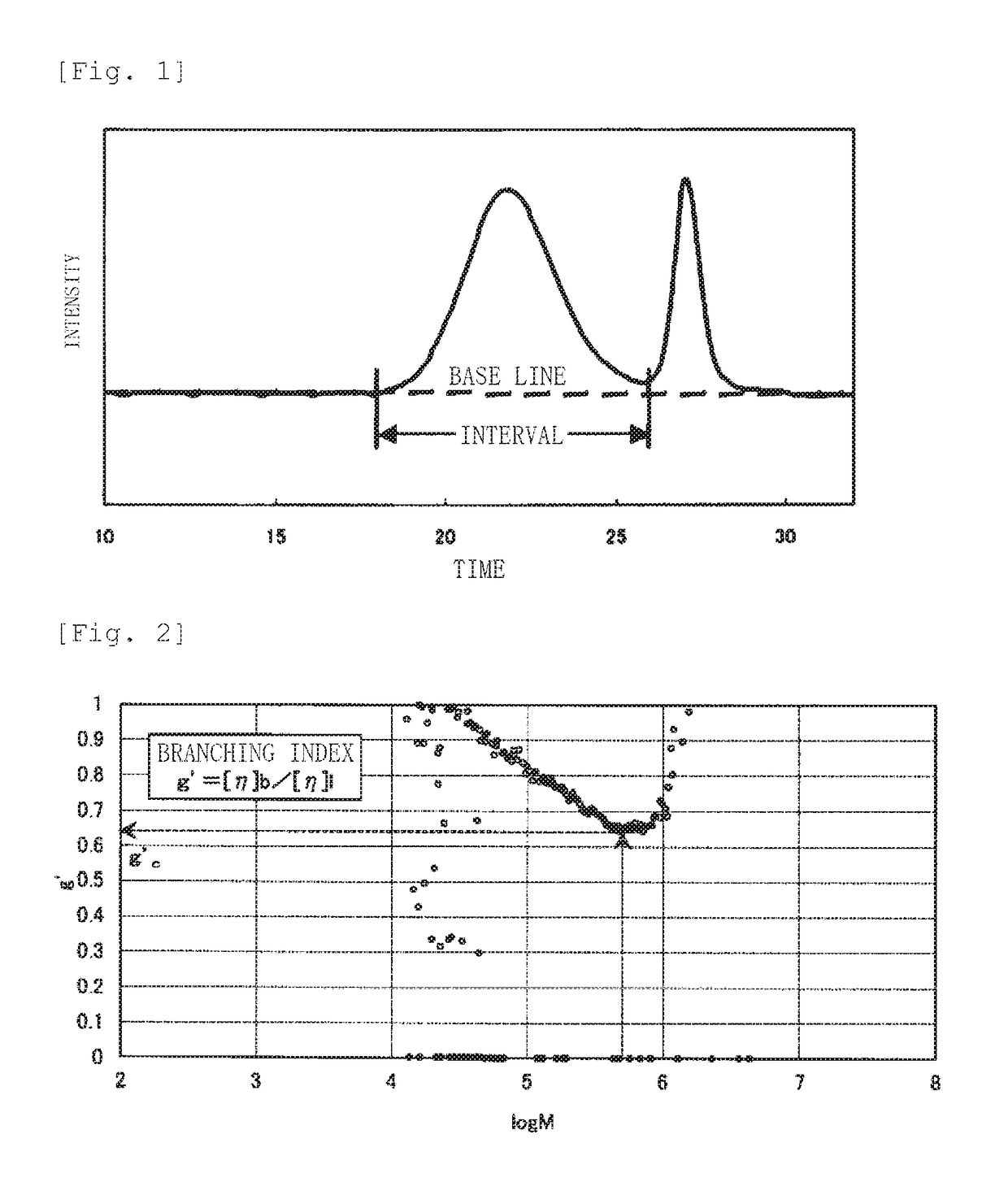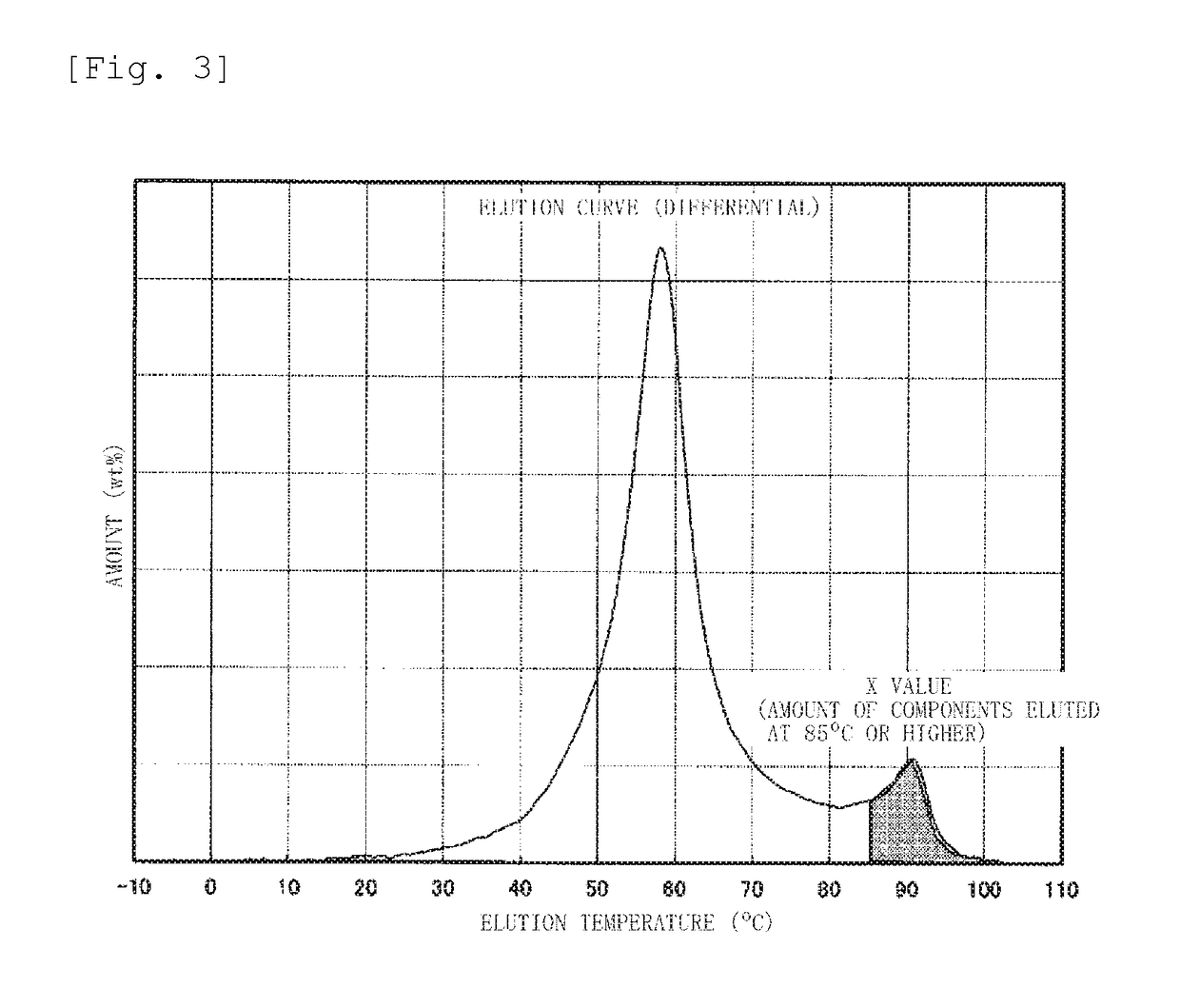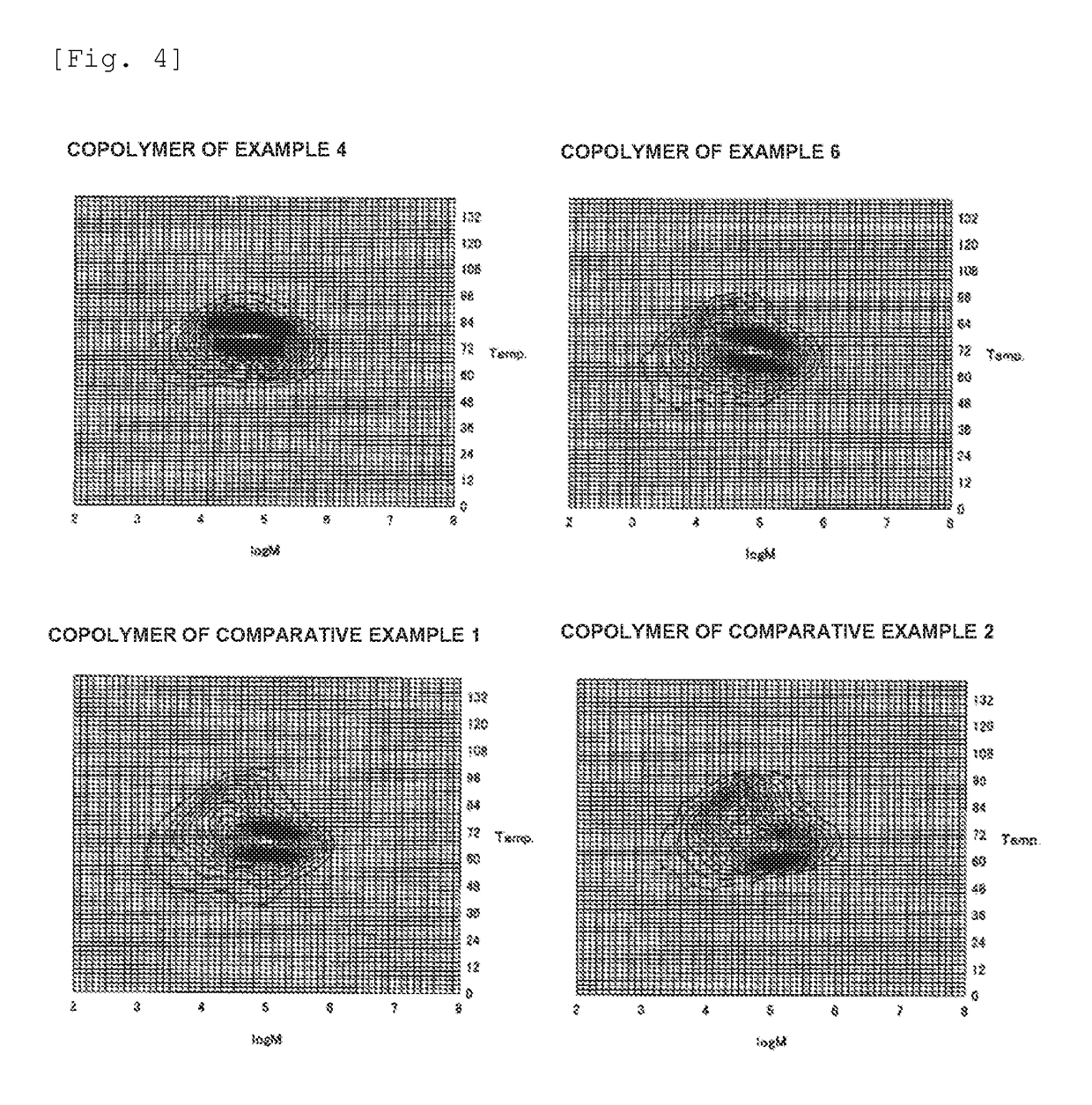Ethylene-α-olefin copolymer and olefin resin composition
a technology of ethylene--olefin and resin composition, which is applied in the field of new ethylene--olefin copolymer and novel olefin resin composition, can solve the problems of insufficient fluidity, insufficient melt properties of olefin homopolymers, and difficulty in maintaining sufficient moldability, so as to improve the balance between impact strength and stiffness, improve the effect of molding properties and high effectiveness
- Summary
- Abstract
- Description
- Claims
- Application Information
AI Technical Summary
Benefits of technology
Problems solved by technology
Method used
Image
Examples
example 1
[0321](1) Synthesis of Bridged Cyclopentadienyl Indenyl Compound
[0322]Dimethylsilylene(4-(4-trimethylsilyl-phenyl)-indenyl) (cyclopentadienyl)zirconium dichloride was synthesized as shown below according to the method described in paragraphs [0140] to [0143] of JP 2013-227271 A.
[0323](II) Materials Used
[0324][Synthesis of Metallocene Compound]
(i) Metallocene Compound A: Synthesis of dimethylsilylene(4-(4-trimethylsilyl-phenyl)-indenyl) (cyclopentadienyl)zirconium dichloride
(1-1) Synthesis of 4-(4-trimethylsilyl-phenyl)-indene
[0325]To a 500-ml flask were added 10.0 g (51.5 mmol) of 4-trimethylsilylphenylboronic acid and 200 ml of dimethoxyethane to form a solution. Subsequently, 27.3 g (128 mmol) of potassium phosphate, 100 ml of water, 8.37 g (43.0 mmol) of 4-bromoindene, 0.22 g (0.86 mmol) of triphenylphosphine, and 0.300 g (0.430 mmol) of PdCl2(PPh3)2 were sequentially added to the flask and stirred under reflux for 12 hours. After cooling to room temperature, 100 ml of water was ...
example 2
[0333](1) Synthesis of Olefin Polymerization Catalyst
[0334]Under a nitrogen atmosphere, 30 g of silica, which had been baked at 400° C. for 5 hours, was added to a 500-ml three-neck flask, to which 195 ml of dehydrated toluene was then added to form a slurry. Under a nitrogen atmosphere, 410 mg of dimethylsilylene(4-(4-trimethylsilyl-phenyl)-indenyl) (cyclopentadienyl)zirconium dichloride synthesized in Example 1 (1) was added to a 200-ml two-neck flask provided separately, and dissolved with 80.4 ml of dehydrated toluene. At room temperature, 82.8 ml of a 20% methylaluminoxane / toluene solution manufactured by Albemarle Corporation was then added to the resulting solution and stirred for 30 minutes. The whole amount of the toluene solution of the reaction product of the zirconocene complex with methylaluminoxane was added to a 500-ml three-neck flask containing the toluene slurry of silica, while the flask was heated with stirring in an oil bath at 40° C. After stirred at 40° C. for...
example 3
[0337](1) Synthesis of Olefin Polymerization Catalyst
[0338]Under a nitrogen atmosphere, 20 g of silica, which had been baked at 400° C. for 5 hours, was added to a 500-ml three-neck flask and then dried under reduced pressure for 1 hour using a vacuum pump while heated at 150° C. in an oil bath. Under a nitrogen atmosphere, 273 mg of dimethylsilylene(4-(4-trimethylsilyl-phenyl)-indenyl) (cyclopentadienyl)zirconium dichloride synthesized in the section (1) was added to a 200-ml two-neck flask provided separately, and dissolved with 53.6 ml of dehydrated toluene. At room temperature, 55.2 ml of a 20% methylaluminoxane / toluene solution manufactured by Albemarle Corporation was then added to the resulting solution and stirred for 30 minutes. The whole amount of the toluene solution of the reaction product of the zirconocene complex with methylaluminoxane was added to the 500-ml three-neck flask containing vacuum-dried silica, while the flask was heated with stirring in an oil bath at 40...
PUM
| Property | Measurement | Unit |
|---|---|---|
| density | aaaaa | aaaaa |
| density | aaaaa | aaaaa |
| density | aaaaa | aaaaa |
Abstract
Description
Claims
Application Information
 Login to View More
Login to View More - R&D
- Intellectual Property
- Life Sciences
- Materials
- Tech Scout
- Unparalleled Data Quality
- Higher Quality Content
- 60% Fewer Hallucinations
Browse by: Latest US Patents, China's latest patents, Technical Efficacy Thesaurus, Application Domain, Technology Topic, Popular Technical Reports.
© 2025 PatSnap. All rights reserved.Legal|Privacy policy|Modern Slavery Act Transparency Statement|Sitemap|About US| Contact US: help@patsnap.com



